Author: Lydia Wu
Readers should be aware that due to the fact that Quilibrium's mainnet has not been launched yet and there is currently limited public information available, the descriptions in this article regarding incentive mechanisms, economic models, funding history, and roadmaps are based solely on the current point in time. The actual situation may change in the future. The writing of this article is mainly for research and popular science purposes, and should not be used as investment advice. Criticism and discussion from peers are welcome.
1. Report Highlights
1.1 Core Investment Logic
- Quilibrium aims to find a "balance" between the computing power of the traditional internet and the decentralization of blockchain, and has designed a unique decentralized cloud computing architecture for this purpose.
- Quilibrium has built a database-based operating system that provides a development experience closer to traditional software, which may attract more traditional software developers and facilitate current Web3 developers to build more complex encrypted applications.
- Quilibrium's design emphasizes security and privacy, making it highly attractive for enterprises that do not wish to expose sensitive data but still want to use encryption technology. For individuals, Farcaster's initial breakthrough also demonstrates the long-term potential of decentralized applications in acquiring users and generating revenue.
- Founder and CEO Cassie Heart is a former senior engineer at Coinbase and developer of Farcaster, and the team has rich experience, stable delivery capabilities, and distinctive personalities.
1.2 Major Risks
- The project is in a very early stage, with the mainnet not yet launched, and the complexity of the project has not been fully validated for technical feasibility and market demand.
- In the short term, it may face competition from Arweave AO, which has higher visibility among users and developers.
- There is no fixed token model, and the token release rate may be unstable, which increases certain risks for investors.
1.3 Valuation
Due to Quilibrium being in a very early stage, we are currently unable to provide an accurate valuation of the project. However, based on its circulating market value and total circulating market value, Quilibrium's current market value is relatively attractive compared to other market players with overlapping concepts.
2. Business Analysis
Quilibrium positions itself as a "decentralized internet layer protocol that provides the convenience of cloud computing without sacrificing privacy or scalability," as well as a "decentralized PaaS solution." In this section, the business of Quilibrium will be explained based on the following questions.
- What are the problems with traditional internet cloud computing?
- Why do we need (another) decentralized computer?
- What makes Quilibrium special compared to the current mainstream blockchain designs?

Source: Cassie Heart's Farcaster account
2.1 Business Positioning
2.1.1 Starting from Computing
Whether in Web2 or Web3, "computing" is a crucial concept and the driving force behind application development, execution, and expansion.
In traditional internet architecture, computing tasks are usually completed by centralized servers. The emergence of cloud computing has improved the scalability, accessibility, and cost efficiency of computing, gradually replacing traditional computing as the mainstream.
In terms of service content, the cloud service models provided by large cloud service providers can generally be divided into three categories: Infrastructure as a Service (IaaS), Platform as a Service (PaaS), and Software as a Service (SaaS), each corresponding to different needs and control capabilities. End users are more familiar with SaaS, while PaaS and IaaS are mainly for developers.

Source: Lydia @ Mint Ventures
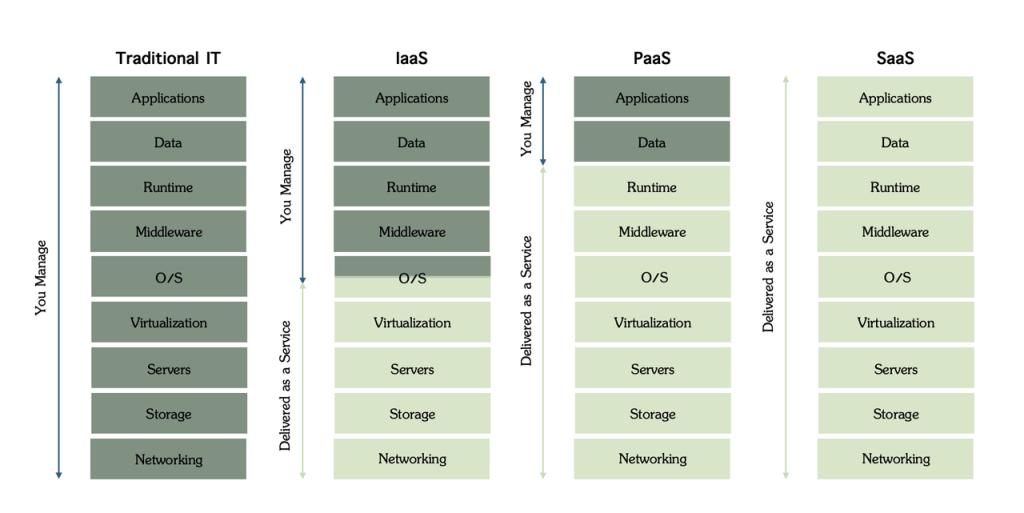
Source: S2 Lab, Lydia @ Mint Ventures
In mainstream blockchains such as Ethereum, computing is usually completed by decentralized nodes. This method does not rely on centrally controlled servers; each node executes computing tasks locally and ensures data correctness and consistency through consensus mechanisms. However, the computing capabilities and processing speed of decentralized computing usually cannot compare with traditional cloud services.
Quilibrium aims to find a "balance" between the computing power and scalability of the traditional internet and the decentralization of blockchain, opening up new possibilities for application development.
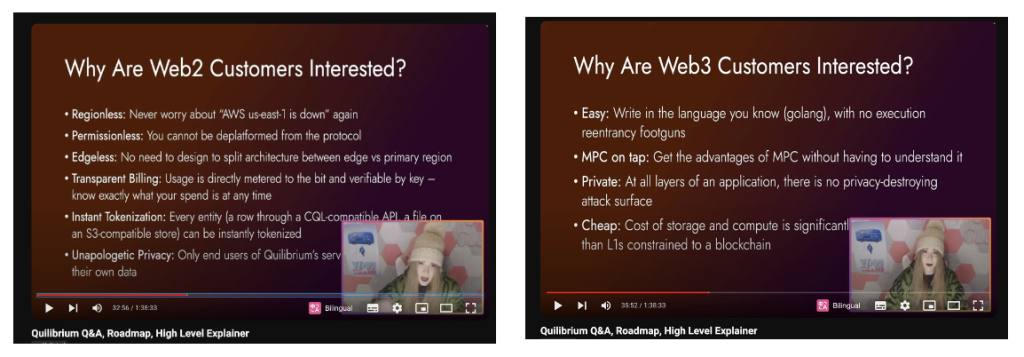
Source: Cassie Heart's live stream recording
2.1.2 Centralization Issues in Computer Systems
For most end users, the issue of centralization in computer systems is not easily perceptible. This is because end users mostly interact with the hardware level of computer systems. Our PCs, mobile phones, and other devices are distributed around the world and run independently under personal control. This distributed physical existence makes computer systems not necessarily centralized at the hardware level.
In contrast to the relatively dispersed hardware, existing computer systems are significantly more centralized at the network architecture and cloud computing service levels—Amazon AWS, Microsoft Azure, and Google Cloud held over 67% of the cloud service market share in the first quarter of 2024, creating a significant gap with later entrants.
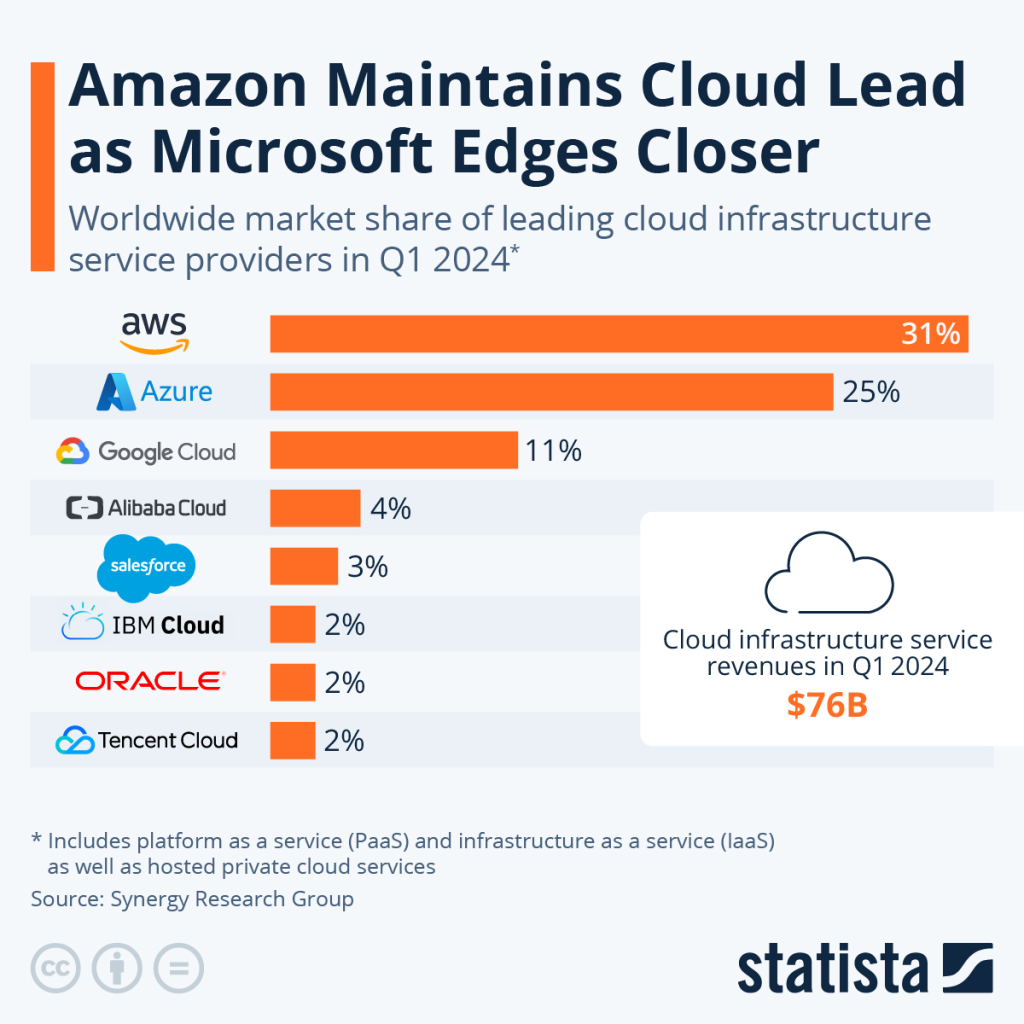
Source: Synergy Research Group
Moreover, as a "water seller" in the AI wave, the trend of the strong getting stronger among cloud service providers seems to continue. Microsoft Azure, as the exclusive cloud service provider for OpenAI, has shown accelerated growth in performance over the past year. In Microsoft's 2024 fiscal third quarter (the first quarter of 2024), the revenue from Azure and other cloud services grew by 31%, exceeding the market's expected growth of 28.6%.

Source: Microsoft, Lydia @ Mint Ventures
In addition to market competition, the privacy and security issues brought about by centralized computer systems are increasingly receiving attention—each outage of several major cloud service providers has had a widespread impact. Data shows that from 2010 to 2019, AWS experienced 22 sudden failures, with an average of 2.4 failures per year. In addition to the impact on Amazon's own e-commerce business, the network services of companies such as Robinhood, Disney, Netflix, and Nintendo, which use AWS, also experienced large-scale interruptions.
2.1.3 Proposal of Decentralized Computer
2.2 Consensus Mechanism
In traditional blockchains, the consensus mechanism is at a more abstract and core level, defining how the network reaches consensus, processes and verifies transactions, and other operations. The choice of different consensus mechanisms will affect the network's security, speed, scalability, and degree of decentralization.
Quilibrium's consensus mechanism is called "Proof of Meaningful Work" (PoMW), where miners are required to perform meaningful work for the network, such as data storage, data retrieval, and network maintenance. The design of the PoMW consensus mechanism integrates multiple fields such as cryptography, multi-party computation, distributed systems, database architecture, and graph theory, aiming to reduce reliance on a single resource (such as energy or capital), ensure the decentralization of the network, and maintain security and scalability as the network scales.
The incentive mechanism is crucial to ensuring the smooth operation of the consensus mechanism. Quilibrium's incentive allocation is not static but dynamically adjusts based on the network's state to ensure that incentives match demand. Quilibrium also introduces a multi-proof mechanism, allowing a node to verify multiple data fragments, even when nodes and core resources are insufficient to maintain network operation.
We can use a simplified formula to understand the miner's final earnings, where the unit reward dynamically adjusts based on the network's scale.
Earnings = Score × Unit Reward
The calculation of the score is based on various factors, with the specific formula as follows:

Where the parameters are defined as follows:
- Time in Mesh for Topic: The longer the participation time and the higher the stability, the higher the score.
- First Message Deliveries for Topic: The more times a message is delivered for the first time, the higher the score.
- Mesh Message Delivery Rate/Failures for Topic: Nodes with high delivery rates and low failure rates receive higher scores.
- Invalid Messages for Topic: The fewer times invalid messages are delivered, the higher the score.
The weighted sum of these four parameters will have a topic ceiling (TC), which limits the value within a certain range to avoid unfair scoring due to excessively large parameters.
- Application-Specific Score: Score defined by a specific application.
- IPCollocation Factor: The fewer nodes from the same IP address, the higher the score.

Source: Quilibrium Dashboard
The number of nodes currently running on Quilibrium has exceeded 60,000, and the actual earnings of running nodes may fluctuate based on the different parameter weights between each version. After version 1.4.19, miner earnings can be viewed in real-time, but can only be claimed after the mainnet is launched.
2.3 Network Architecture
Quilibrium's core business is a decentralized PaaS solution, and its network architecture mainly consists of communication, storage, data querying and management, and operating systems. This section will focus on its design differences compared to the current mainstream blockchains, and readers interested in technical details and implementation methods can refer to the official documentation and whitepaper.
2.3.1 Communication
As the foundation of the network, Quilibrium's communication consists of four parts.
a. Key Generation
Quilibrium proposes a PCAS (Planted Clique Addressing Scheme) key generation method based on graph theory. Similar to traditional blockchain technology, PCAS also uses asymmetric encryption—each user has a public key and a private key. The public key can be made public for encrypting information or verifying signatures, while the private key is kept confidential for decrypting information or generating signatures. The main differences lie in the key generation method, representation, and application direction (see the table below).
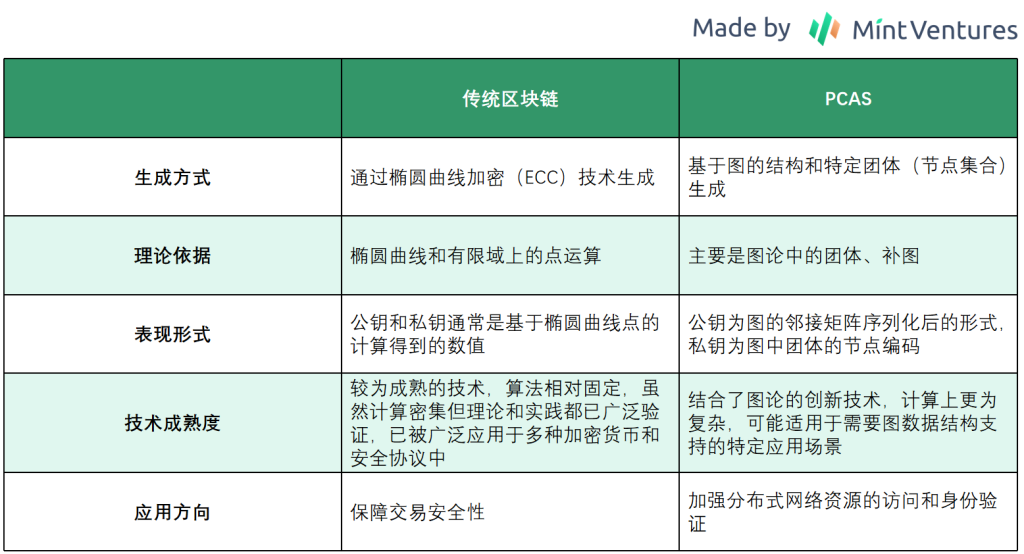
b. End-to-End Encryption
End-to-end encryption (E2EE) is a key component in ensuring secure communication between nodes, where only the communicating parties can see plaintext data, and even systems or intermediaries helping to transmit information cannot read the content.
Quilibrium adopts a method called Triple-Ratchet for end-to-end encryption, which provides higher security compared to traditional ECDH schemes. Specifically, traditional schemes typically use a single static key or periodically update keys, while the Triple-Ratchet protocol updates keys after each communication, achieving forward secrecy, post-compromise security, plausible deniability, replay protection, and unordered message delivery. This approach is particularly suitable for group communication, but it also comes with higher complexity and computational costs.
c. Mixnet Routing
Mixnets are a black box that can receive messages from senders and deliver them to recipients, preventing external attackers from associating senders and recipients even if they can access information outside the black box.
Quilibrium adopts RPM (Random Permutation Matrix) technology, providing a complex and difficult-to-crack hybrid network architecture that has advantages in anonymity, security, and scalability.
d. Peer-to-Peer Communication
GossipSub is a peer-to-peer message delivery protocol based on a publish/subscribe model, widely used in blockchain technology and decentralized applications (DApps). Quilibrium's BlossomSub protocol is an extension and improvement of the traditional GossipSub protocol, aiming to enhance privacy protection, resist Sybil attacks, and optimize network performance.
2.3.2 Storage
Most traditional blockchains use cryptographic hash functions as the basic data integrity verification tool and rely on consensus mechanisms to ensure network consistency. However, such mechanisms have two main limitations:
They usually do not include verification of storage time, and there is no direct mechanism to defend against attacks based on time or computational power.
Storage and consensus mechanisms are often separate, which may lead to issues with data synchronization and consistency.
Quilibrium's storage solution uses Verifiable Delay Functions (VDF) design, creating a time-dependent chain structure and integrating storage and consensus mechanisms. The following points summarize the characteristics of this approach:
Input Processing: By using hash functions such as SHA256 and SHAKE128 to process input, any small change in data will result in significantly different hash values, making the data more difficult to tamper with and easier to verify.
Delay Guarantee: The computation process is intentionally set to be time-consuming. The computation tasks must be executed sequentially, with each step depending on the result of the previous step, making it impossible to speed up the process by increasing computational resources to ensure that the output is based on continuous and deterministic time-based computation. Since the generation process cannot be parallelized, any attempt to recalculate or modify the published VDF result will take a considerable amount of time, providing enough time for network participants to detect and respond.
Fast Verification: The time required to verify a VDF result is much less than the time required to generate the result, usually only requiring some mathematical checks on the final result or using some auxiliary data to confirm the validity of the result.
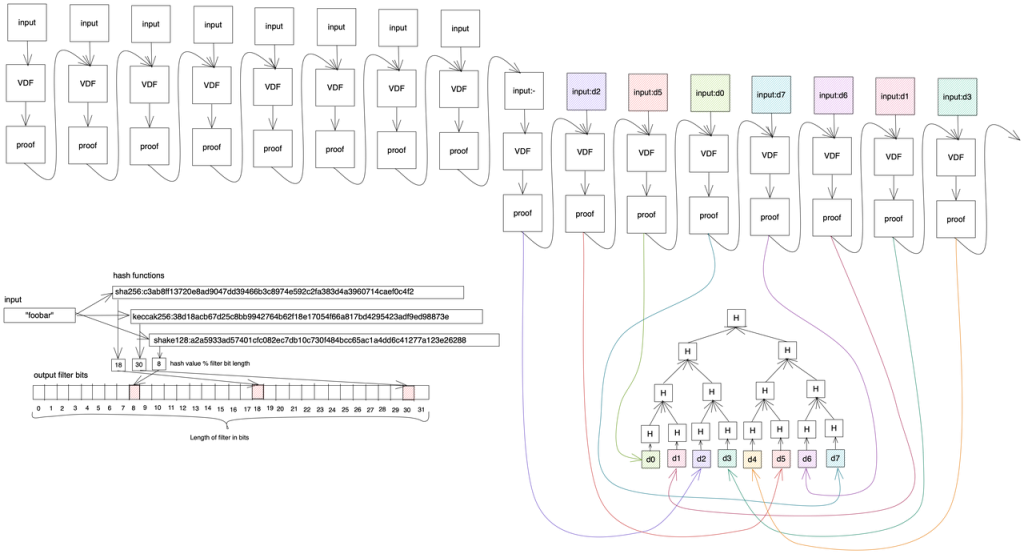
Source: Quilibrium Whitepaper
This time-based proof chain structure does not rely on block generation in traditional blockchains and theoretically can reduce MEV attacks and front-running phenomena.
2.3.3 Data Query and Management
Most traditional blockchains use simple key-value storage or Merkle Trees to manage data, which is limited in expressing complex relationships and supporting advanced queries. Additionally, most blockchain systems do not provide built-in privacy protection mechanisms when nodes execute queries, leading to the background for privacy-enhancing technologies such as zero-knowledge proofs.
Quilibrium proposes an "Oblivious Hypergraph" framework, combining hypergraph structure and Oblivious Transfer technology, to support complex query capabilities while maintaining data privacy.
Hypergraph Structure: Allows edges to connect multiple vertices, enhancing the ability to express complex relationships. This structure can directly map multiple database models, allowing any type of data relationship to be expressed and queried on the hypergraph.
Oblivious Transfer Technology: Even nodes processing data cannot know the specific data being accessed during the query process, enhancing privacy protection during data queries.
2.3.4 Operating System
An operating system is not a native concept in blockchain. Most traditional blockchains mainly focus on consensus mechanisms and data immutability, usually not providing complex operating system-level functionality. For example, while Ethereum supports smart contracts, its operating system functionality is relatively simple, mainly limited to transaction processing and state management.
Quilibrium has designed an operating system based on its hypergraph database and implemented common operating system primitives, such as a file system, scheduler, IPC-like mechanisms, message queues, and control key management. This design of building an operating system directly on the database can support the development of complex decentralized applications.
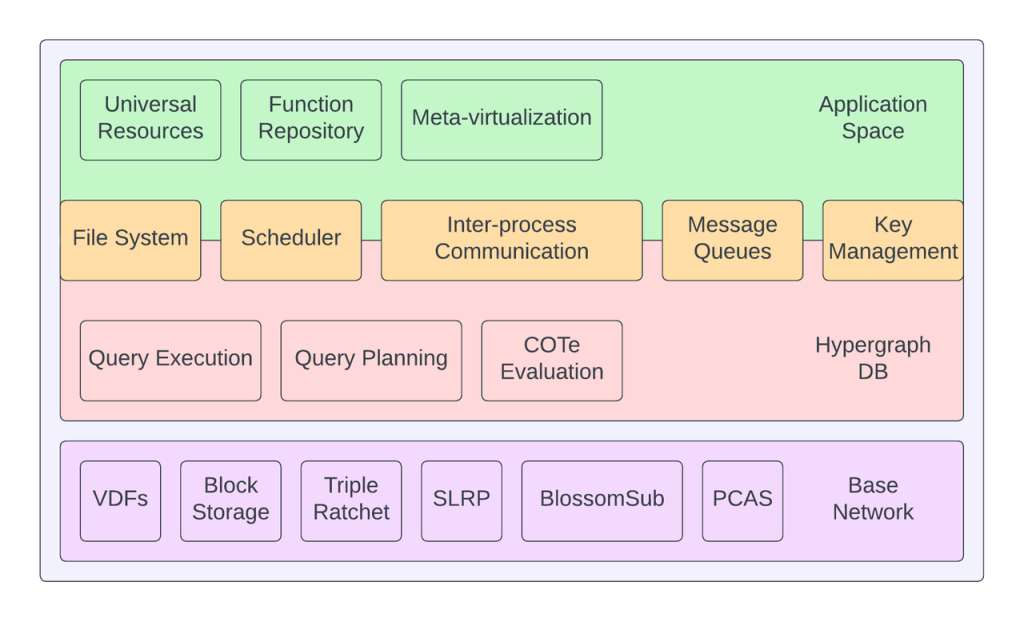
Source: Quilibrium Whitepaper
2.4 Programming Language
Quilibrium's development primarily uses Go as the programming language, combined with Rust and JavaScript. The advantage of Go lies in its ability to handle concurrent tasks, concise syntax, and an active developer community. According to the Tiobe programming language rankings, Go has seen a significant rise in rankings in recent years, currently ranking 7th in the latest June rankings. Other blockchain projects that also use Go for low-level development include Ethereum, Polygon, and Cosmos.

Source: Quilibrium
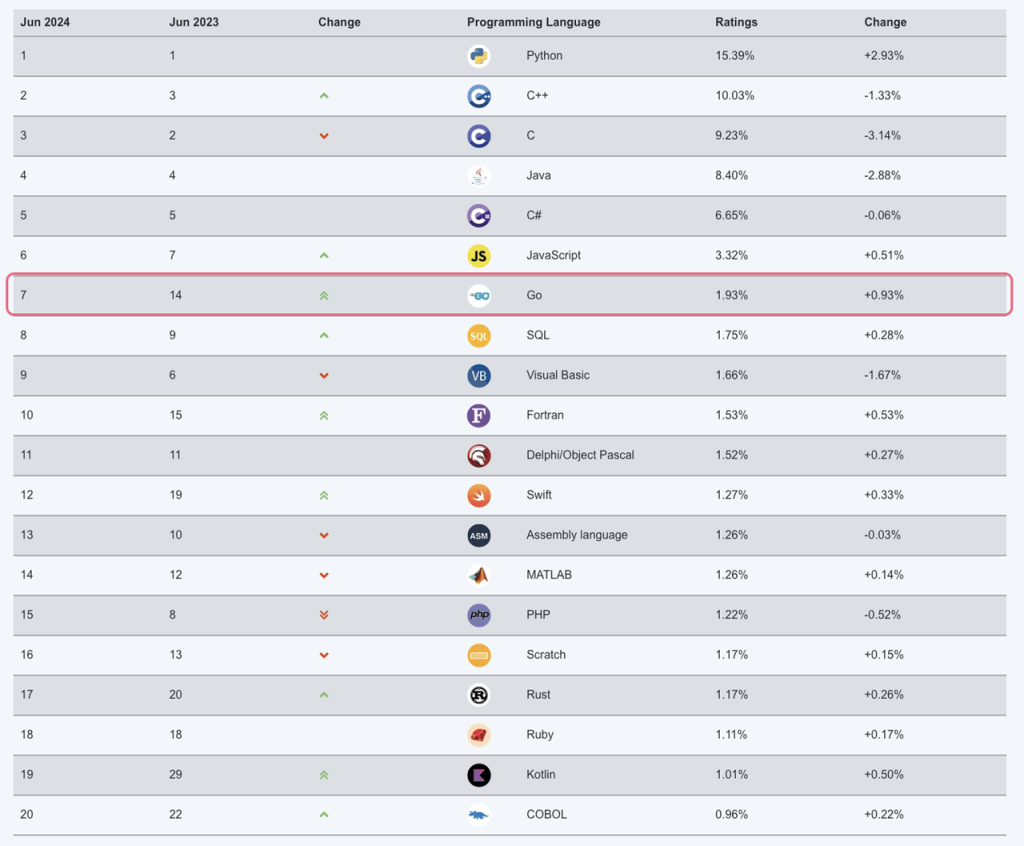
Source: Tiobe
3. Project Status
3.1 Project History and Roadmap
Quilibrium's whitepaper was released in December 2022, and its roadmap is roughly divided into 3 phases: Dusk, Equinox, and Event Horizon.
Quilibrium is currently in a very early stage, with the team iterating on the network every two weeks. The latest version is v1.4.20. Since the team has removed the 1.5 phase from the roadmap, the network will directly upgrade to version 2.0 after version 1.4. The 2.0 version, also known as the mainnet, marks the end of the Dusk phase and is expected to be officially launched in late July, allowing for the bridging of $QUIL.
According to the tentative plan, the Equinox and Event Horizon phases will provide support for more advanced applications such as streaming media and AI/ML model training.
3.2 Team and Funding
Cassie Heart is the founder/CEO of Quilibrium. Before founding Quilibrium, she was a senior software engineer at Coinbase, with over 12 years of experience in software development and blockchain.
Due to Cassie's opposition to centralized social media platforms, she and the Quilibrium project account are mainly active on Farcaster. Cassie's Farcaster account has over 310,000 followers, including Ethereum founder Vitalik. Cassie is also a developer for Farcaster.
According to the Quilibrium developer data panel, development of the Quilibrium project began in April 2023 and has been ongoing steadily. There are a total of 24 developers, with Cassie Heart (Cassandra Heart) as the main developer.


Source: Quilibrium
Quilibrium's team has not publicly disclosed its funding history and investment institutions.
3.3 Token Model Analysis
$QUIL is the native token of Quilibrium, launched in a 100% fair manner, with all token production coming from node operation. The team operates a small number of nodes, but their token holdings account for less than 1%.
$QUIL does not have a fixed token model, and the total token supply is unlimited, but it will dynamically adjust based on the network's adoption rate. When the network grows, more tokens will be released as node incentives; if the growth rate slows down, the token release rate will also decrease accordingly.
The table below shows predictions made by the team and community members regarding the token release schedule. The current circulating supply is 340 million, and the final supply is expected to converge around 20 billion. The specific release situation will depend on the development of the ecosystem.
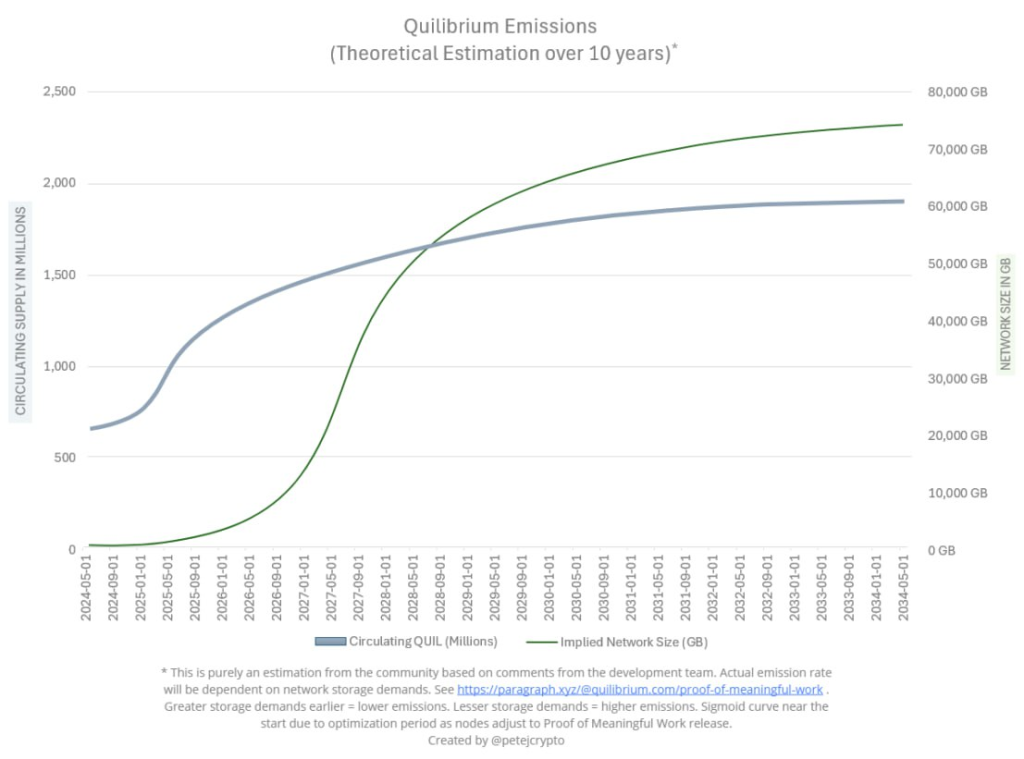
Source: @petejcrypto
3.4 Risks
Potential risks for Quilibrium at the current stage include:
The project is in a very early stage, with the mainnet not yet released, and the project's complexity is high. The validation of technical feasibility and market demand has not been completed.
In the short term, it may face competition from Arweave AO, which has higher visibility in terms of user awareness and developer adoption.
There is no fixed token model, and the token release rate may be unstable, adding a certain level of risk for investors.
4. Valuation
The valuation of infrastructure projects like Quilibrium is a very complex process, involving multiple dimensions such as TVL, on-chain active addresses, dApp count, developer community, etc. Since Quilibrium is still in a very early stage and the token $AO of Arweave AO has not yet been traded, we cannot currently determine the project's accurate valuation.
We have listed the circulating market cap and fully diluted market cap of projects with some conceptual overlap with Quilibrium (data as of June 23, 2024) for reference.
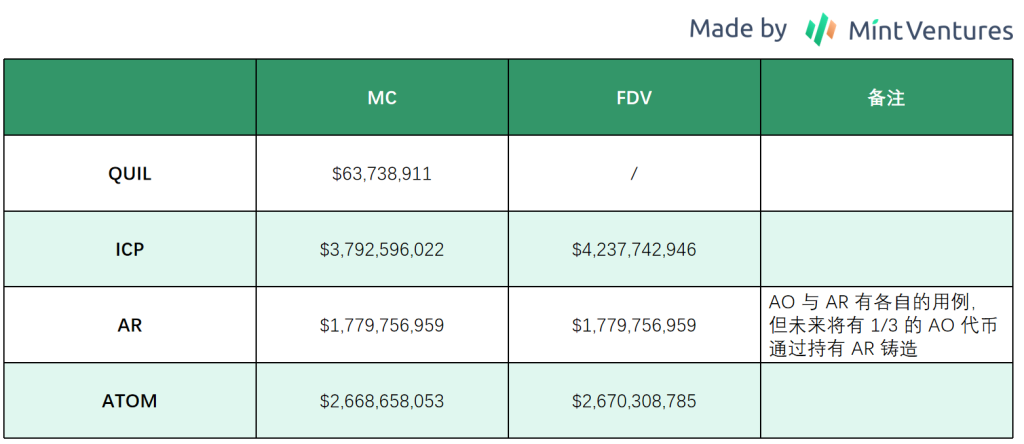
Source: CoinGecko, data as of June 23, 2024
- References and Acknowledgments
The writing of this article needs to thank Hai Ge (@PleaseCallMeWhy), Lan Ge, and Connor for their review and opinions.
https://quilibrium.com/quilibrium.pdf
https://paragraph.xyz/@quilibrium.com
https://dashboard.quilibrium.com/
https://www.youtube.com/watch?v=Ye677-FkgXE&ab_channel=CassandraHeart
https://dune.com/cincauhangus/quilibrium
https://source.quilibrium.com/quilibrium/ceremonyclient/-/graphs/main?ref_type=heads
https://www.tiobe.com/tiobe-index/
https://s2-labs.com/admin-tutorials/cloud-service-models/
https://x.com/Pow2wer/status/1802455254065402106
免责声明:本文章仅代表作者个人观点,不代表本平台的立场和观点。本文章仅供信息分享,不构成对任何人的任何投资建议。用户与作者之间的任何争议,与本平台无关。如网页中刊载的文章或图片涉及侵权,请提供相关的权利证明和身份证明发送邮件到support@aicoin.com,本平台相关工作人员将会进行核查。




